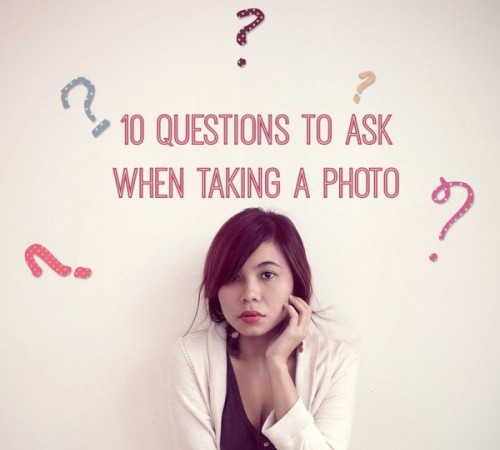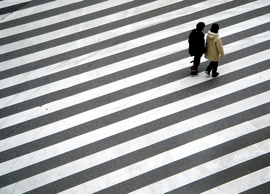10 Questions to Ask When Taking a Photo

However getting in the habit of asking some simple questions can help take your images to the next level. Here’s 10 questions to get in the habit of asking while framing your shots. I’ve included links in each one to further reading on the topics. I hope you find them helpful:

This is an important question and one that should help you to make any number of decisions in terms of composition, framing, exposure etc. In essence what you’re asking is ‘why am I taking this shot? What is it’s purpose and what am I trying to convey?’ Is it purely a way to keep a record of a moment, are you trying to capture the emotion of a moment, is it possibly a shot to give to someone, is it part of a larger series of shots or will it be the only shot to commemorate the moment etc. Read more on telling stories with photos

What will viewers of this picture naturally have their eye drawn to in this scene? Once you’ve identified this focal point you can think about where to place it in the frame (consider the rule of thirds for example).
There are a variety of ways that you can enhance a focal point – some of which we explore here.

Once you’ve identified what you do want your viewers eyes to be drawn towards and have placed it in the frame – scan your eyes over the shot and see if there are any competing focal points and ask yourself whether they add to or take away from the image? Secondary focal points can add depth to shots but they can also be very distracting and so you might need to reposition yourself or adjust your focal length and/or depth of field to accommodate or remove them from your shots (read more on removing clutter from photography). Also keep in mind that if your shot has more than one focal point that it might be worth taking two shots, one of each focal point, in order to keep things simple.

One of most common places for distractions in digital photography is the background of your shots. Run your eyes over the space behind your subject to see what else is in the image (do the same for the foreground). Consider whether you want the background in focus or nice and blurry.
Read more on getting backgrounds right.

Another common mistake in digital photography is taking shots where your subject is too small in the frame. Shots that fill the frame with your subject tend to be much more dynamic and show a lot more detail of your subject. To get this effect you have the option of moving yourself closer, moving your subject closer or using a longer focal length to give the effect of closeness.
Read more on filling your frame.

Always give consideration to how your subject is lit. Without light you’ll lose detail and clarity in your image and your camera will have to compensate by doing things like increasing ISO and lengthening shutter speeds (which could lead to noisy and blurred images). What is the main source of light, where is it coming from, is there enough light, do you need artificial light sources (flash etc), do you need to stabilize your camera on a tripod to stop camera shake due to low light etc. Read more on using artificial light here and here as well as photographing moving subjects in low light conditions.

It’s amazing how many otherwise good photos are spoiled by framing that is slightly offline. Sloping horizons and slightly leaning people or buildings should always be in the back of your mind to check. Read more on getting horizons horizontal and getting other lines straight.
Also related to this question is that of ‘Am I holding my Camera correctly?‘ Many people don’t and as a result suffer from camera shake and framing mistakes.

Put 10 digital camera owners in front of a scene and most of them will take exactly the same shot from the same position. Make your images stand out from the crowd by challenging yourself to not only take the standard shots that everyone else will get but to find creative and fresh angles and perspectives to shoot from.
9. How would holding the camera in the other format change this shot?
Many photographers get into the habit of always holding their camera the same way (horizontally/landscape or vertically/portrait). While it’s OK to have a preference one way or the other it’s also worth remembering that changing the format can drastically change the impact of the shot. Don’t forget you can also hold your camera at an angle for an effective result too.

This is related to asking about focal points but gets in touch with the fact that while you’re photographing a still image your viewers eyes don’t remain still as they look at an image. People tend to follow lines and are attracted to shapes and colors so considering all of these different visual elements and cues can help improve your shots considerably. Read more on horizontal, vertical and diagonal lines and how they impact a shot.
Of course you probably won’t remember all the questions and you’re unlikely to go through each of them with every shot you take – however next time you head out with your digital camera concentrate on asking yourself at least one or two of them as you take your shots. As you do you’ll find that they become more automatic and in time you’ll naturally take digital photography shots that take into account all of these elements.



.gif)





